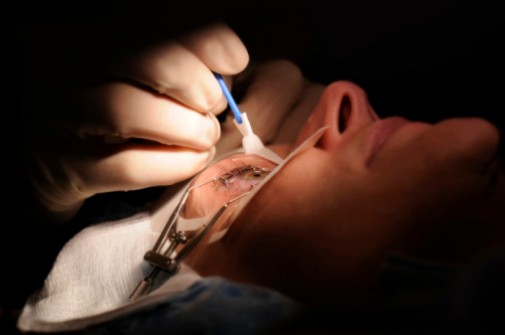Why cataract surgeries are on the rise

A new study from the Mayo Clinic finds the number of people having cataract surgery is on the rise. And surprisingly, an increasing number of younger people are seeking the operation.
What’s behind the spike? Researchers say it’s because older people have vibrant lives, want to do all they can to maintain good health and stay in the workforce longer. The report appears in the Journal of Cataract & Refractive Surgery.
“Cataract surgery rates are rising in all age groups between 50 and 90, but the greatest increase is in the 70- and 80-year-olds. And part of that is that our older population, or the aging baby boomers, are working longer, they want to be more active, they have more demands on their vision,” said study leader, Dr. Jay Erie, M.D., in a news release. “That’s why they’re looking for surgery sooner — so that they can remain independent, remain active, continue to work.”
Researchers at Mayo said age-related cataract affect nearly 22 million Americans and cost nearly $7 billion to treat annually, with no sign the pace will be easing anytime soon. The number of cases could reach 30 million people by 2020. The findings are published in the Journal of Cataract & Refractive Surgery.
A cataract is a clouding of the lens in the eye that affects vision. Most cataracts are related to aging, according to the National Eye Institute. Cataracts are most common among older people.
Study leaders used data gathered from the Rochester Epidemiology Project to track cataract surgeries from 2005-11 for the analysis.
Among other findings, the study showed that 60 percent of people having cataract surgery on one eye came back in just three months for surgery on the second eye, which researchers said is a “significant increase” in the trend.
The upward trend in surgery has some health care providers concerned about how the costs will be covered in the coming years.
“Ophthalmology and ophthalmologists and patients and payers are beginning to look at ways they can weigh the visual benefits to the individual patient against the cost to society as a whole, Dr. Erie said. “How can we maximize the outcome and minimize the cost to society?”
Related Posts
Comments
One Comment
About the Author
health enews staff is a group of experienced writers from our Advocate Health Care and Aurora Health Care sites, which also includes freelance or intern writers.


















I’m not that much of a internet reader to be honest but your
blogs really nice, keep it up! I’ll go ahead and bookmark your site to come back later.
All the best